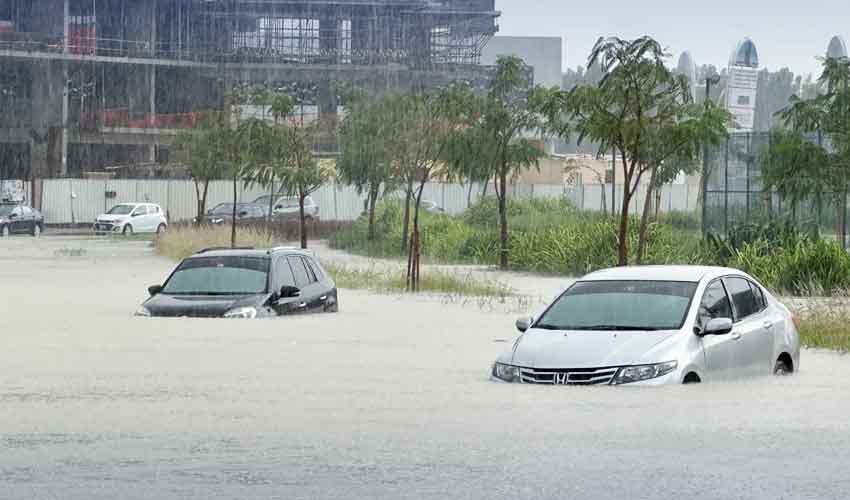The repercussions of this week’s unprecedented storm, which brought much of the nation to a standstill, continue to haunt the United Arab Emirates on Thursday.
After the storm inundated Dubai’s runway on Tuesday, operations at the airport, a crucial travel hub, remain disrupted, leading to flight delays, cancellations, and diversions. Although international carriers are now able to receive inbound flights at Terminal 1, the airport still grapples with delays and disruptions in the air.
Emirates, the largest airline at the airport, announced that it would commence passenger check-ins in Dubai at 9 am (0500 GMT) on Thursday, nine hours later than the original midnight start time.
The flooding rendered the airport’s surrounding roads impassable, complicating the situation for stranded travelers seeking food, while overcrowding hindered access for those with confirmed reservations.
Following its landfall in neighboring Oman on Sunday, the storm battered the United Arab Emirates on Tuesday, resulting in hours-long traffic jams due to rainwater inundating homes and flooding roads. One fatality was reported in the UAE, with 20 casualties in Oman.
As the UAE experienced its heaviest rainfall in the 75 years of recorded history, authorities reported residents trapped in cars, offices, and homes due to flooding.
Moreover, government workers and students were instructed to remain indoors until flooded roads were cleared.
Climate experts attribute the intensity of the storm to human-caused climate change, leading to a rise in extreme weather events globally. According to climate scientist Colleen Colja of Imperial College London, the storm likely intensified due to increased moisture in the air resulting from climate change.
Forecasts suggest that climate change will lead to higher temperatures, increased humidity, and a heightened risk of flooding in certain Gulf region areas. In nations like the United Arab Emirates, where drainage infrastructure is inadequate to handle heavy rainfall, the situation may exacerbate.
Contrary to reports, the government agency responsible for cloud seeding in the UAE denied conducting any cloud-manipulation operations prior to the storm.
UAE President Sheikh Mohammed bin Zayed Al Nahyan issued a statement on Wednesday, directing authorities to assess the damage and provide assistance to families affected by the storm, according to the UAE state news agency.


